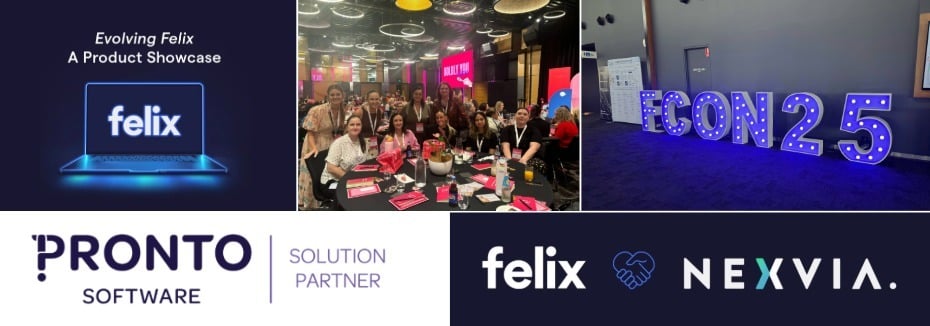Recently, I had the pleasure of hosting a webinar titled "Driving social procurement: Practical insights and applications" with guest speaker Lea Schöpping from Procurement Co. This webinar was designed to equip procurement professionals, sustainability leads, supply chain managers, and anyone looking to integrate social responsibility into their business strategy with the knowledge and tools to drive social procurement within their organisations.
The session provided benchmarking insights on current social procurement practices used by both private and government organisations, walked through different project phases and key deliverables of a successful social procurement project, and offered actionable takeaways including the benefits of implementing a social procurement guideline and toolkit.
For those who missed the live event or want to revisit the key points, we've compiled a comprehensive Q&A recap from the webinar.
Q: How much did you find that the location of a project drove the approach to social procurement? Has the market considered this location as a driver?
A: Location is indeed an important factor. Victoria State Government, for example, considers both project location and value when selecting a suitable social procurement approach. They have different value thresholds for regional and metro locations, with lower thresholds triggering more rigorous social initiatives in regional areas. This value-based approach becomes more targeted and strategic as project values increase.
Q: What methodologies did you use for your research for the guideline?
A: For the guideline, we looked at what other companies have published online and what frameworks governments like Victoria State Government are using. We structured the guideline around the typical procurement stages, ensuring we covered each stage from project establishment to contract management. We then fed in the appropriate content for each stage based on our research and industry knowledge.
Q: What advice would you give to procurement professionals looking to champion social procurement within their organisations?
A: Start small with pilot projects and continuously evaluate what works and what doesn't. Apply these lessons to future projects. Look around at what other companies and governments are doing, and learn from them. Then try to apply those insights to your own organisation. The pilot project approach is particularly suitable in the social procurement space.
Q: Are there any industry-specific considerations when implementing social procurement strategies?
A: Yes, there are industry-specific considerations as each industry has unique compliance requirements, challenges, and opportunities. For example, in the chocolate industry, the focus might be on addressing child labour and ensuring farmers are paid a living wage. In pipeline construction, the focus could be on engaging with traditional owner groups and creating local employment opportunities. However, some social considerations, like gender equality and engaging local businesses, are often industry-agnostic.
Q: What are the best categories to target so you can get maximum results from your social procurement program?
A: The best categories depend on the industry, specific project, and goods or services being procured. There may also be priorities or legislative requirements specific to an organisation. Procurement functions need to identify what they want to prioritise within the social space and customise it based on the specific tender.
Tools like the Pairwise assessment can help prioritise categories that promise maximum results and positive impact for a specific procurement activity.
Q: What role do you think technology has to play in facilitating and managing the social procurement process?
A: Technology plays a huge role in procurement in general, offering process efficiencies. In social procurement, key benefits are in data collection, visibility, and reporting. Having supplier performance tracking, comparison data, and reporting all in one platform allows procurement teams to have reliable data readily available. This enables them to select suppliers that provide value for money while also being leaders in the social space.
Q: In the process of implementing or driving social procurement, what unexpected challenges or lessons are organisations encountering that aren't often discussed?
A: Contract management is a key challenge, particularly managing the achievement of social KPIs and targets. Social targets aren't always as easily measurable as traditional KPIs. For example, if a trainee leaves a contractor for another opportunity, it's unclear how to handle that in terms of KPI measurement.
Dealing with supplier performance and non-performance in the social space is challenging. Additionally, sometimes ESG considerations can conflict with each other, like in the case of solar panels which are great for clean energy but may have modern slavery risks in their supply chain.
Q: What are the top 5 things that a buyer looks for from a social benefit supplier's pitch?
A: While there might not be a definitive top 5, here are some key points:
- Quantifiable benefits or social impact achieved (numbers are always great)
- Practices in place that address key compliance standards (e.g. fair labour practices, addressing modern slavery risks)
- Demonstration of how the supplier drives social value regardless of their size (e.g. using local businesses for outsourced services)
- Ability to adapt to changing social objectives
- Clear communication of the supplier's social impact and practices
Q: Outside of traditional measures like spend, how can you implement different project targets and reporting that captures social impact?
A: There are various ways to set targets and report on social impact beyond spend. Examples include:
- Setting a target for a specific number of traineeships or paid internships awarded to First Nations people throughout the contract duration
- Requiring a certain percentage (e.g. 70%) of the workforce employed by suppliers on the project to undertake First Nations cultural awareness training
- Targeting 100% compliance with fair work practices by all suppliers
- Setting a goal to award a specific number of contracts to Australian disability enterprises
These types of targets allow for a more comprehensive measurement of social impact beyond just monetary spend.
-----
Inspired to take your social procurement strategy to the next level?
Don't let this valuable information go to waste. Here are some steps you can take:
- Watch the full webinar on-demand here.
- Share this recap with your colleagues and start a conversation about implementing social procurement in your organisation.
- Review your current procurement processes and identify areas where you can integrate social considerations.
- Consider developing a social procurement guideline and toolkit tailored to your organisation's needs and goals.
- Reach out to Procurement Co for expert guidance on implementing social procurement strategies. You can contact Lea Schöpping directly for more information.
- Stay tuned for future webinars and events from Felix on sustainable and social procurement topics.
For more information on how Felix can support your social procurement initiatives through our platform, please contact us. We're here to help you make a difference.

Recent Articles
2025 in review: Milestones, insights and achievements
2025 – a year of that brought meaningful developments for Felix as we continue to address the evolving needs of organisations navigating complex supply-chain environments.
Top 10 reasons for a centralised vendor database
As organisations grow, so does the complexity of managing vendor relationships. Many still rely on spreadsheets or siloed systems, which can lead to inefficiencies, data inconsistencies, and compliance risks. A centralised vendor database offers a smarter, more scalable solution that brings structure, visibility, and control to procurement operations.
Here are the top 10 reasons why centralising your vendor data is a strategic move.
Five ways poor contract storage could be costing your organisation money
Contracts are the backbone of every business relationship – legally binding documents that define expectations, responsibilities, and value.
But what if the way your organisation stores those contracts is quietly costing you money?
Let's stay in touch
Get the monthly dose of supply chain, procurement and technology insights with the Felix newsletter.
.png)





